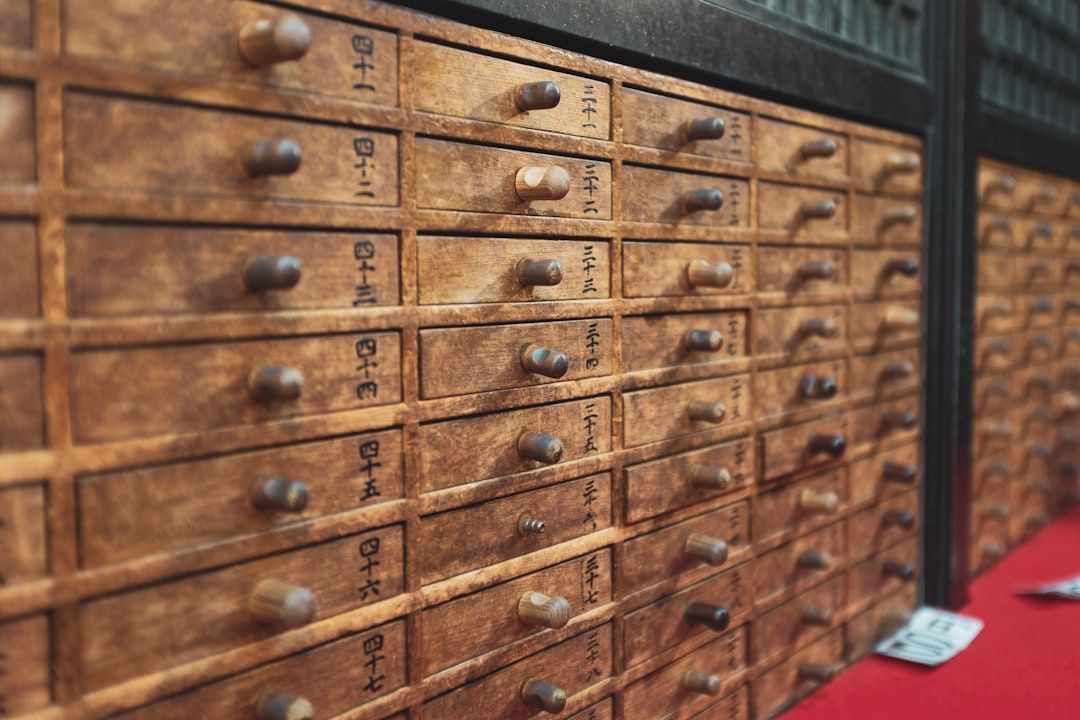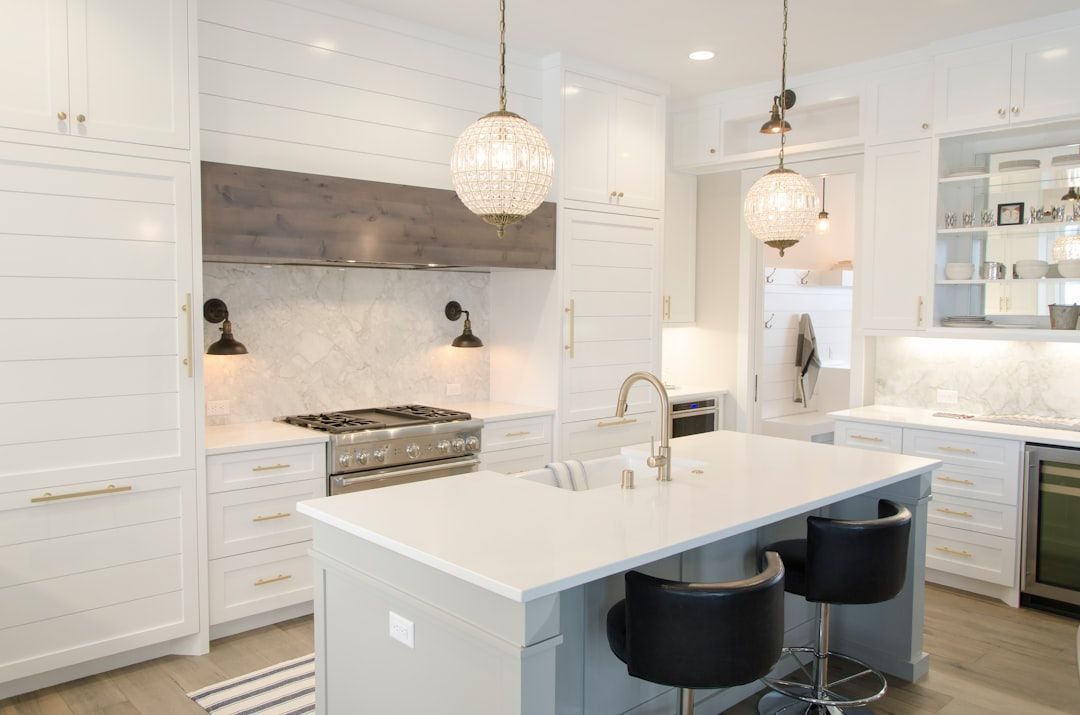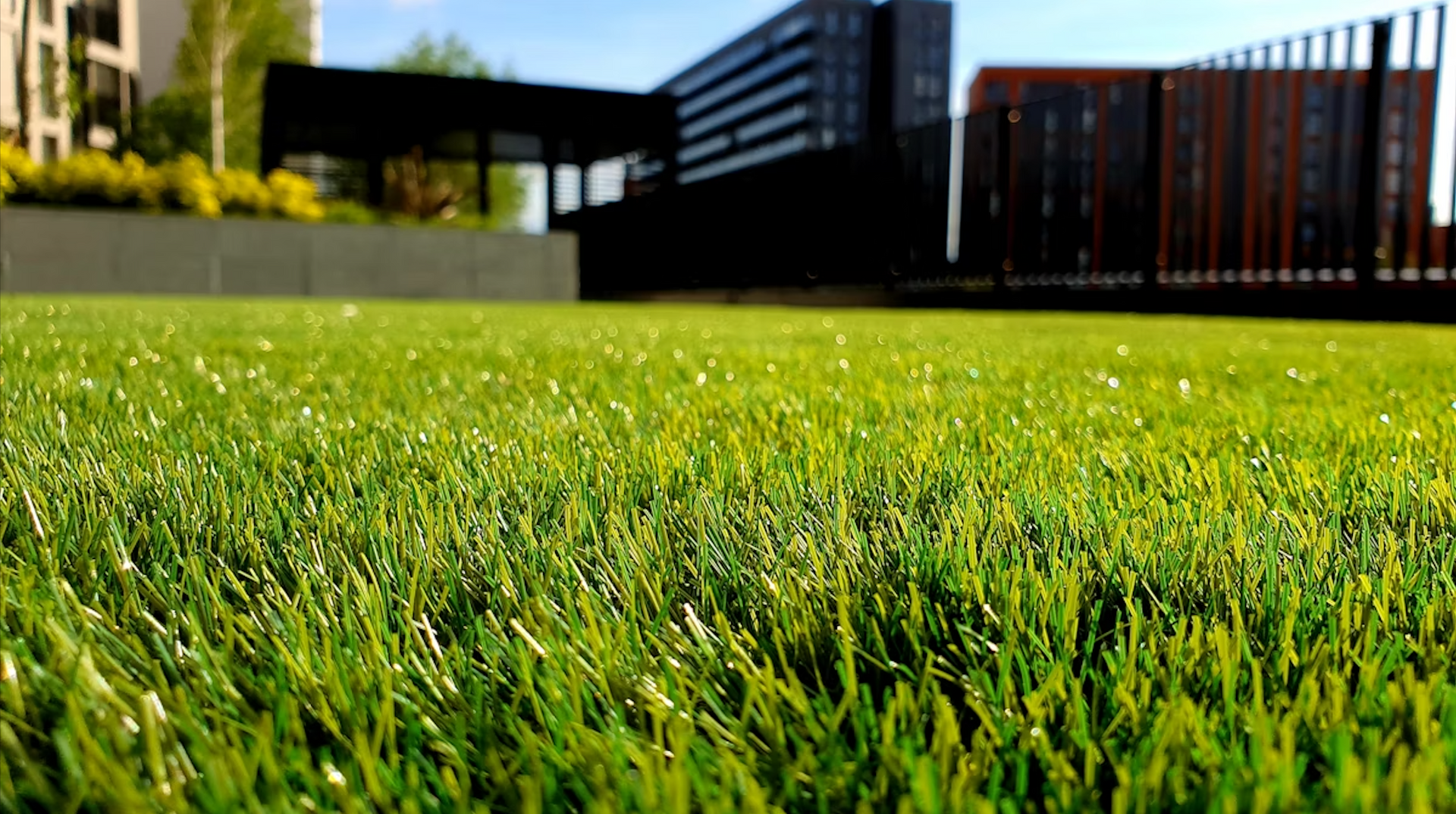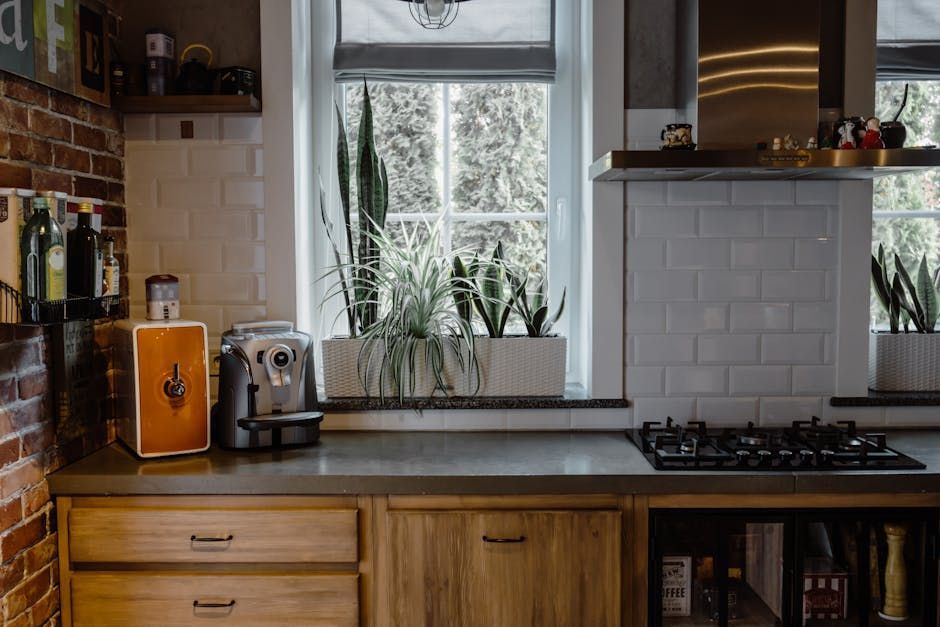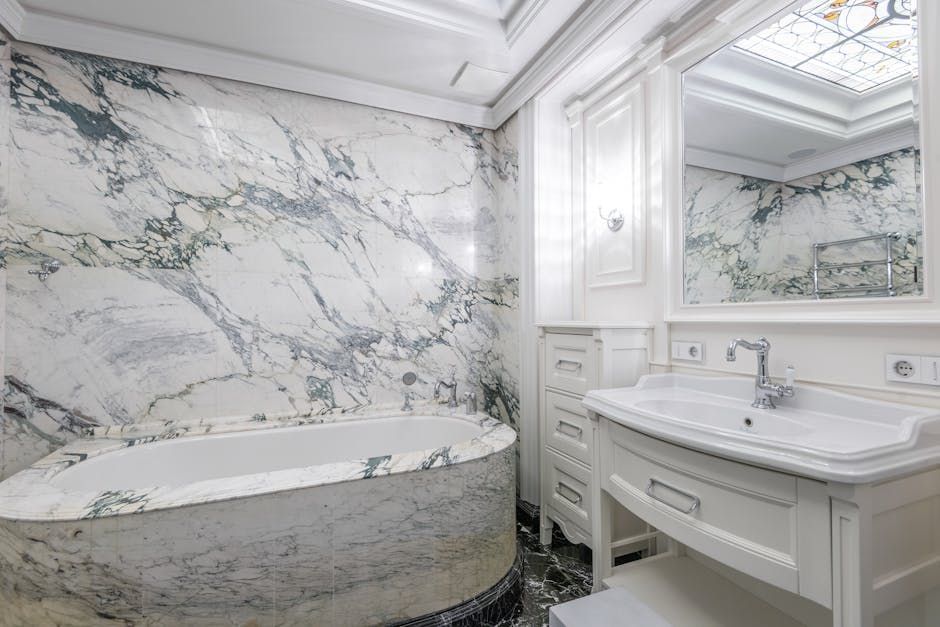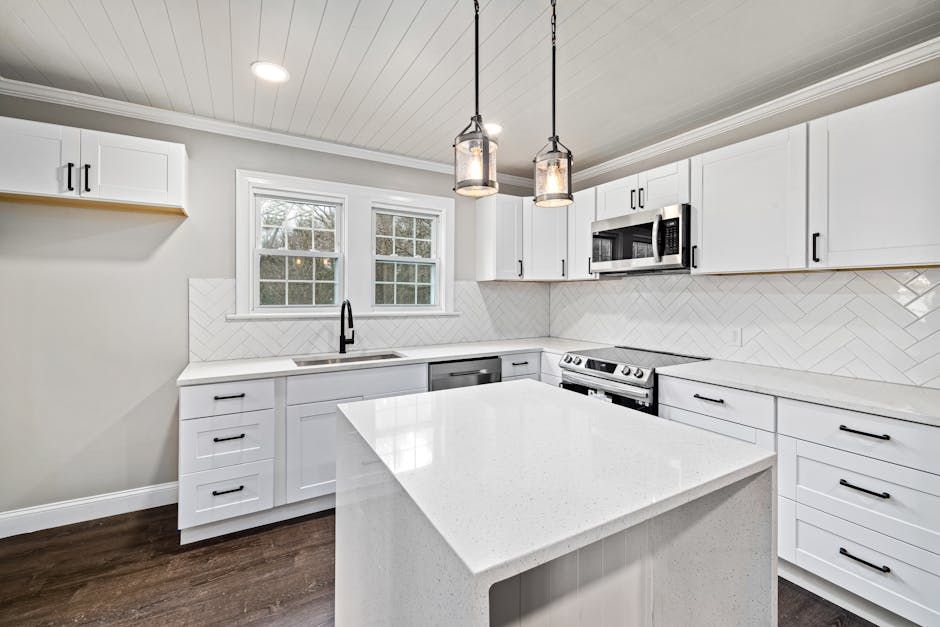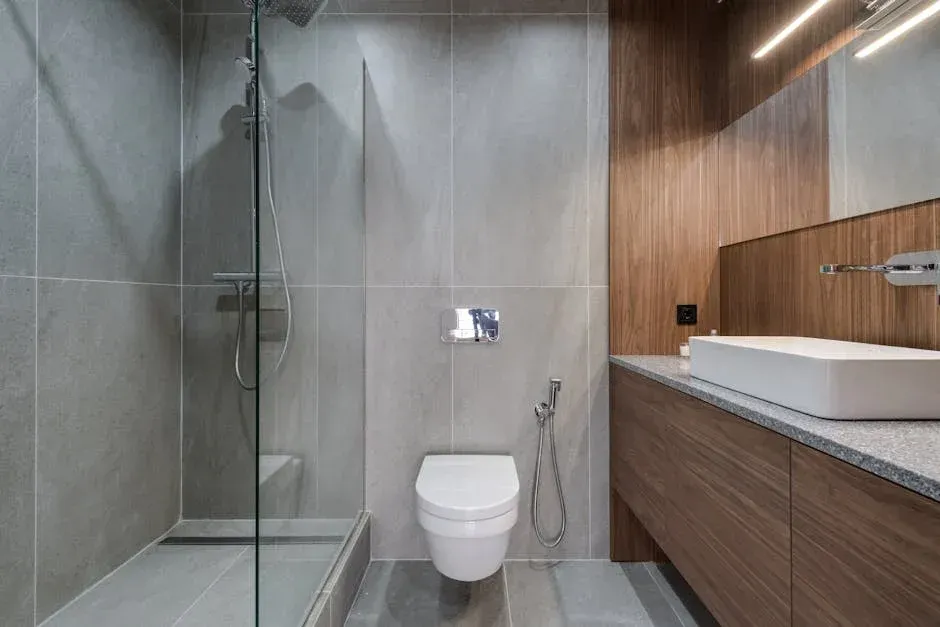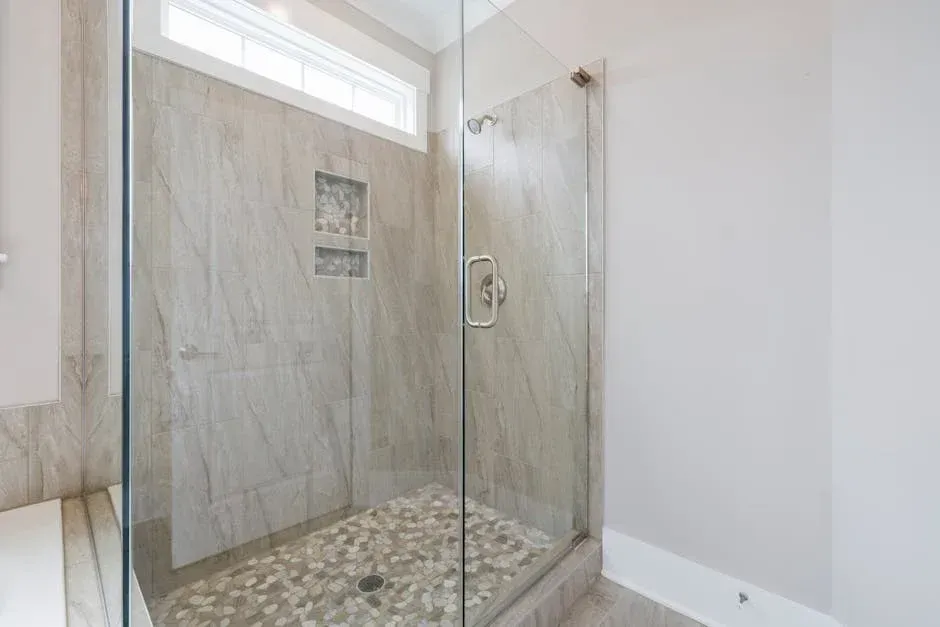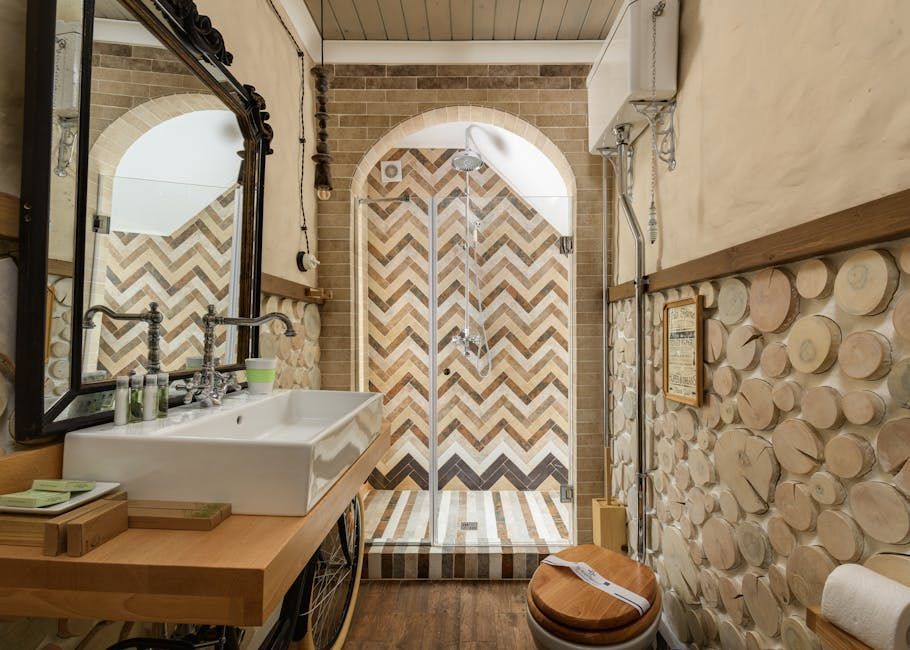Conserve and Save: The Best Water-Efficient Bathroom Fixtures
Save Water, Save Money: The Future of Bathroom Fixtures
Have you ever thought about how much water literally goes down the drain in your bathroom every day? I'm Mike Martinez from Accountable Home Remodeling, and after years of bathroom renovations across Denver, I've seen how water-saving bathroom fixtures can make a dramatic difference—not just for the environment, but for your wallet too.
Most homeowners are shocked when they learn that bathrooms account for more than half of all indoor water use in typical homes. That morning shower, those toilet flushes, and the faucet you leave running while brushing your teeth all add up quickly. The average family of four churns through over 300 gallons of water daily—that's like filling a small swimming pool every week!
Water-saving bathroom fixtures are designed with a simple but brilliant purpose: to deliver the performance you expect while using significantly less water. The beauty is that you'll rarely notice the difference in your daily routine, but you'll definitely notice it on your utility bills.
The most popular water-efficient fixtures we install include high-efficiency faucets that use just 1.5 gallons per minute (a 30% reduction compared to standard models), performance showerheads flowing at 1.75 GPM instead of the wasteful 2.5 GPM standards, and high-efficiency toilets that use a mere 1.28 gallons per flush compared to older models that gulp down 3.5 gallons. For even more savings, many homeowners love dual-flush toilets with separate buttons for liquid waste (0.8 GPF) and solid waste.
On a budget? Don't worry. Simple faucet aerators are inexpensive retrofits that can reduce water flow by up to 30% with minimal investment.
The urgency for water conservation is growing. According to a sobering Government Accountability Report, 80% of states across America will experience water shortages within the next decade. By upgrading to WaterSense labeled fixtures (the EPA's gold standard for efficiency), a typical household can save approximately 700 gallons annually from faucets alone—equivalent to 45 refreshing showers!
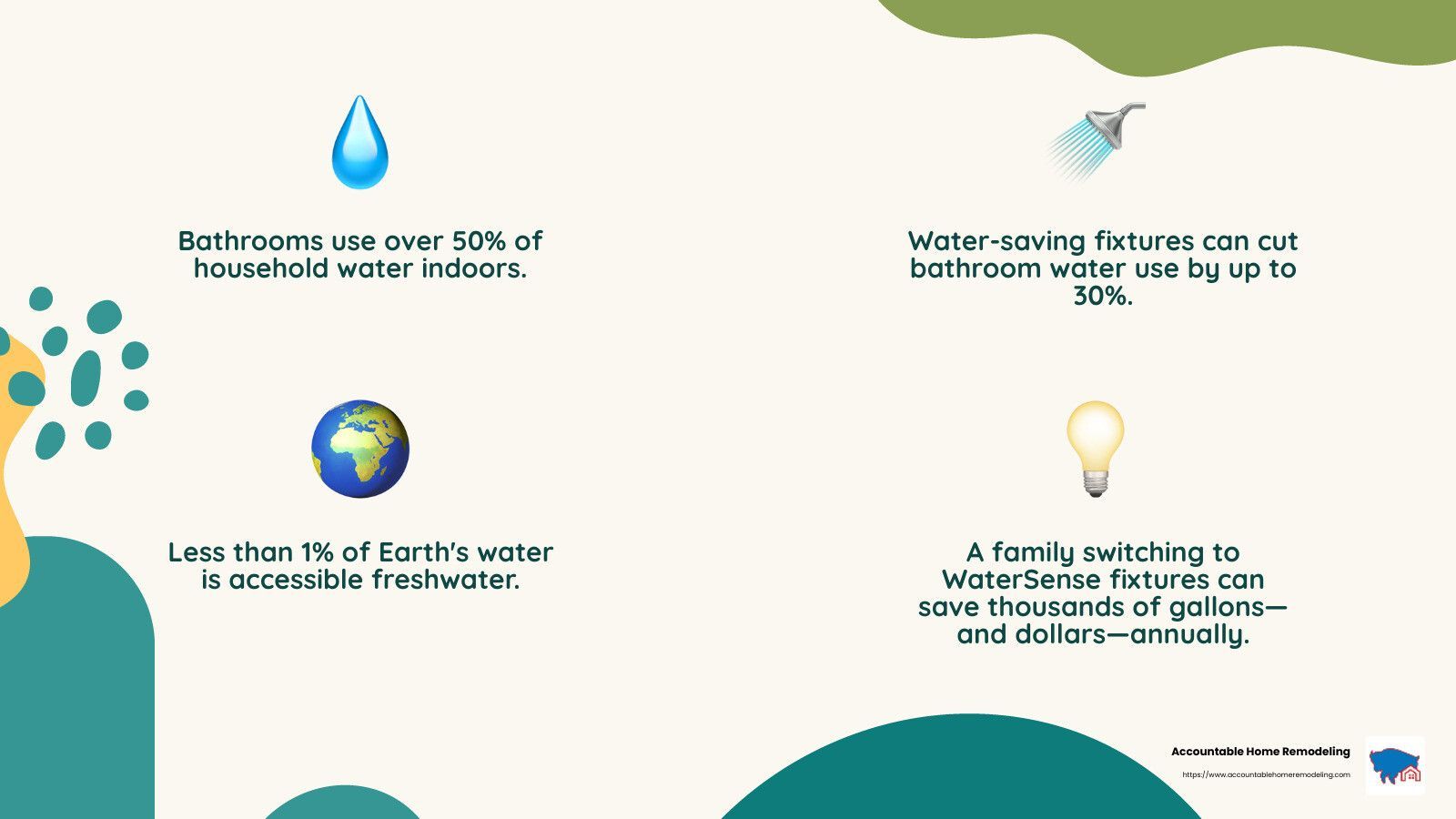
Throughout my career helping Denver homeowners create beautiful, functional bathrooms, I've found that water-saving bathroom fixtures offer that rare combination of immediate benefits and long-term value. They look fantastic, perform brilliantly, and help conserve our most precious resource—all while keeping more money in your pocket each month. That's what I call a true win-win.
Why Water Efficiency Matters
Ever turn on your bathroom faucet and think about where all that water comes from? While we live on a planet that's mostly water, here's the surprising truth: less than 1% of Earth's water is actually accessible freshwater that we can use. That's a tiny fraction of what appears to be an abundant resource.
Here in Colorado, we feel this reality more deeply. Our beautiful semi-arid landscape reminds us daily that water isn't something to take for granted. Recent drought conditions have only emphasized how precious each drop truly is.
One of our Denver clients put it perfectly after seeing their first reduced water bill: "Having a faucet that wastes water is like having an umbrella indoors. You know it's there, but you hardly ever use it until it's too late."
The impact of water conservation reaches far beyond just saving water. When you use less water—especially hot water—you're also cutting energy consumption and reducing carbon emissions. According to the EPA, if every home in America installed water-saving bathroom fixtures, we could collectively save nearly $1.3 billion in water and energy costs nationwide.
What makes these numbers even more compelling is how they affect individual households. The average family of four uses more than 300 gallons of water daily, but by installing water-efficient fixtures, that same household can reduce their usage by about 20%. This translates to approximately $200 in annual savings on water bills – money that could be better spent elsewhere!
Even more concerning is the EPA projection that 80% of U.S. states will face water shortages within the next decade. Add to that the estimated 1.7 trillion gallons of water wasted worldwide due to leaks alone, and the case for water efficiency becomes crystal clear.
Water conservation isn't just about being environmentally responsible—though that's certainly important. It's about making smart choices today that prepare us for a future where water resources may become increasingly strained. By choosing water-saving bathroom fixtures now, you're not only contributing to a more sustainable water future but also enjoying immediate financial benefits.
Want to learn more about the science behind water conservation? The EPA offers scientific research on water conservation that dives deeper into the data and long-term impacts.
Top 5 Water-Saving Bathroom Fixtures
When shopping for water-saving bathroom fixtures, think of the EPA's WaterSense label as your trusted friend in the store. This certification isn't just another sticker—it guarantees the product meets strict efficiency standards while still performing beautifully, using at least 20% less water than standard fixtures without leaving you frustrated in the shower.
I've found that many homeowners worry they'll sacrifice comfort for conservation, but that's simply not true with today's technology. Modern water-efficient fixtures have come a long way, offering both luxury and responsibility in one package.
If you're wondering about those acronyms, GPM stands for "gallons per minute," measuring how quickly water flows through faucets and showerheads. GPF means "gallons per flush" for toilets and urinals. The lower these numbers, the more water—and money—you'll save.
What's particularly exciting about these fixtures is their return on investment. While they might cost slightly more upfront, most water-saving bathroom fixtures pay for themselves within a year or two through reduced utility bills. Even better, many local utilities offer rebate programs that can offset the initial purchase price, making the switch even more affordable.
In our Denver-area renovations, we've seen families cut their water bills by 20% or more after installing a full suite of efficient fixtures. That's real money back in your pocket while doing something good for Colorado's precious water resources.
Now, let's dive deeper into each of these water-conserving champions and find how they can transform your bathroom into an eco-friendly oasis without sacrificing style or comfort.
1. High-Efficiency Faucets
That bathroom sink you use every day? It might be quietly draining your wallet. While standard faucets gush out 2.2 gallons per minute (GPM), water-saving bathroom fixtures like WaterSense labeled faucets deliver a maximum of just 1.5 GPM—a 30% reduction you'll barely notice during your morning routine.
I've installed dozens of these faucets in Denver homes, and the technology behind them is actually pretty clever. Most use aerators that mix air with water, creating the feeling of strong pressure while using less water. Others incorporate flow restrictors that limit water volume without compromising performance. The fancier models feature touchless sensors (my personal favorite for families with kids) that prevent water from running when you're not actively using it, or metering technology that delivers precise amounts per use.
The savings add up quickly. According to EPA data, switching to these efficient models can save the average family about 700 gallons annually—that's enough water for 45 showers! As one of our Westminster clients put it, "I was skeptical about low-flow faucets, but after installing them in both bathrooms, I can't tell the difference in pressure—only in my water bill." That's exactly the reaction we love to hear.
Today's manufacturers have come a long way from the clunky water-savers of the past. You can find these efficient faucets in virtually any style you want—sleek single-handle designs that make temperature control a breeze, touchless models that boost both convenience and hygiene, or classic double-handle fixtures for a more traditional look.
Not ready for a complete faucet replacement? No problem. A simple aerator retrofit might be your answer. These inexpensive little devices screw onto most existing faucets and can reduce water flow by 30% or more. They're the perfect first step toward a more water-efficient bathroom, and we often recommend them to homeowners who are just starting their conservation journey.
Looking to explore your options? The EPA provides a comprehensive list of water efficient faucets for your bathroom. And if you're interested in broader eco-friendly renovation options, check out our guide to Green Building Materials that complement these water-saving fixtures beautifully.
2. Performance Showerheads
Your daily shower might be the most refreshing part of your routine—but it's also a significant water user. While standard showerheads gush a hefty 2.5 gallons per minute, water-saving bathroom fixtures like WaterSense labeled showerheads max out at 2.0 GPM, with many modern models achieving an impressive 1.75 GPM flow rate.
"The first thing people worry about with low-flow showerheads is whether they'll feel like they're showering under a dripping faucet," says Mike from our team. "But that's the beauty of modern engineering—these showerheads actually deliver a fantastic experience while saving tons of water."
Today's performance showerheads employ some pretty clever tricks to maintain a luxurious shower feeling. Aerating technology mixes air with water to create a misty, voluminous spray that feels substantial despite using less water. Laminar-flow designs produce clean, individual water streams for a more targeted experience. Many models even feature pulsating options that deliver a massage-like sensation—proving efficiency doesn't mean sacrificing comfort.
For the tech-savvy homeowner, smart shower controls add another dimension of water savings. These systems might include pause buttons for when you're lathering up, flow adjustments to customize your experience, or even digital interfaces that let you set exact temperatures and flow patterns.
"I installed a 1.75 GPM showerhead in my master bath last month," shares Lakewood homeowner Sarah T. "Not only does my shower feel more invigorating with the new spray pattern, but I'm actually looking forward to my next water bill. It's a win-win."
The numbers tell an impressive story: a family of four upgrading to a performance showerhead can save approximately 2,900 gallons of water annually. Since much of this is hot water, you're also cutting down significantly on water heating costs—about 13% less energy used for shower water heating alone.
For those who love options, consider exploring thermostatic shower valves that maintain perfect temperature control regardless of pressure changes, or dual-head systems with individual controls for a customized experience. These advanced fixtures pair beautifully with water-efficient heads to create a shower that's both luxurious and responsible.
As Jake T. Galang, a Certified Kitchen and Bath Designer we frequently collaborate with, puts it: "The technology in today's performance showerheads has come so far that most people can't tell the difference between a 2.5 GPM and a 1.75 GPM model in a blind test. What they will notice is the lower utility bills."
When selecting your new showerhead, always look for the WaterSense label—it's your guarantee that the product meets EPA standards for both efficiency and performance, delivering a shower experience that feels indulgent while being environmentally conscious.
3. High-Efficiency Toilets
Toilets are the single largest water users in most homes, accounting for nearly 30% of indoor water consumption. This makes them the most impactful fixture to upgrade for water conservation.
The contrast between old and new toilet technology is stark:
- Toilets manufactured before 1993 typically use 3.5 to 7 gallons per flush
- Standard toilets made after 1994 use 1.6 gallons per flush
- WaterSense certified high-efficiency toilets use 1.28 gallons per flush or less
This means replacing an older toilet with a WaterSense model can save more than 2 gallons per flush—adding up to over 13,000 gallons annually for a family of four.
High-efficiency toilets achieve these savings through advanced engineering:
- Pressure-assisted technology: Uses compressed air to improve flushing power
- Dual-flush mechanisms: Offer separate buttons for liquid waste (typically 0.8 GPF) and solid waste (typically 1.28 GPF)
- Redesigned bowls and trapways: Optimize water flow for effective waste removal
- Gravity-fed systems: Use improved design to maximize flush efficiency
"When we recommend high-efficiency toilets to our Denver Metro clients, we emphasize that today's models perform better than older toilets, even while using less water," explains our lead bathroom designer. "The days of double-flushing are long gone with these modern designs."
For maximum savings, consider dual-flush toilets, which can reduce water usage by up to 67% compared to older models. These toilets feature two buttons or a split-flush mechanism, allowing users to select the appropriate water volume for each use.
The EPA offers a helpful rebate finder to locate incentives for WaterSense certified toilets in your area. Many water utilities in the Denver Metro Area offer rebates ranging from $50 to $100 for qualifying toilet replacements.
4. Low-Flow & Waterless Urinals
While not as common in homes, urinals play a major role in commercial water consumption. The good news? Modern technology has revolutionized these fixtures, creating options that dramatically reduce—or even eliminate—water usage.
Traditional urinals typically guzzle 1.0 to 1.5 gallons with every flush. In contrast, today's water-saving bathroom fixtures offer impressive alternatives:
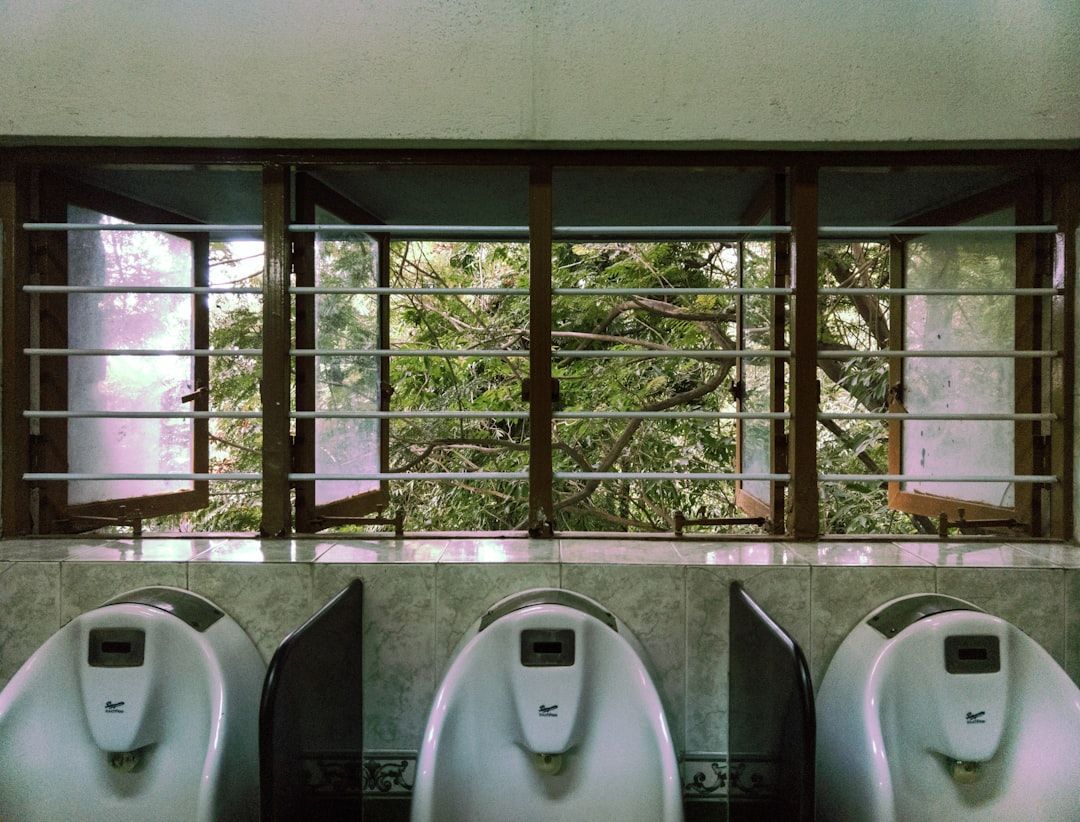
"I was skeptical at first," admits Tom, owner of a popular Denver restaurant who recently upgraded his restrooms. "But these new urinals have been a game-changer—both for our water bill and maintenance time."
Low-flow urinals use as little as 0.125 gallons per flush—that's 87% less water than standard models! They achieve this efficiency through clever engineering, including pressure-assisted flushing systems that deliver powerful cleaning with minimal water. Many feature sensor-operated systems ensuring they only flush when actually used, while precision nozzles direct water exactly where needed for maximum efficiency.
Taking conservation even further, waterless urinals completely eliminate water usage through innovative designs. These fixtures use specialized trap cartridges containing biodegradable sealant liquid that effectively blocks odors while allowing waste to pass through. The gravity-fed drainage system works remarkably well, preventing sewer gases from escaping without using a single drop of water. Some models even incorporate microbial blocks with beneficial bacteria that naturally control odors.
For businesses in water-conscious Colorado, the savings add up quickly. A single commercial bathroom upgrading to low-flow or waterless urinals can save over 12,000 gallons per fixture annually—a substantial reduction that benefits both the environment and the bottom line.
"While waterless urinals offer the greatest water savings, the 0.125 GPF low-flow models provide an excellent middle ground between efficiency and maintenance requirements," notes our commercial projects manager at Accountable Home Remodeling. "They're particularly well-suited for high-traffic facilities throughout the Denver Metro Area."
Proper maintenance ensures these fixtures perform as designed. Low-flow models need standard cleaning plus occasional flush valve maintenance, while waterless urinals require regular cartridge replacement (typically every 3-6 months) and daily cleaning with non-acid, non-abrasive cleaners to prevent mineral buildup.
For anyone considering a commercial bathroom renovation, these modern urinals deserve serious consideration. Their sleek designs not only conserve precious water resources but also signal to customers and employees that your business is committed to environmental responsibility—a value increasingly important to Colorado residents.
5. Smart Retrofits & Accessories
Not quite ready to replace all your bathroom fixtures? Don't worry! There are plenty of affordable, easy-to-install options that can dramatically reduce your water usage without a complete renovation.
Pressure-Reducing Valves (PRVs) work behind the scenes to lower your home's water pressure from the typical 70 PSI down to a more efficient 35 PSI. This simple change means less water flows through every fixture in your home. As a bonus, lower pressure puts less strain on your pipes and connections, potentially extending the life of your entire plumbing system.
One of our clients in Lakewood was amazed at the difference: "After installing a PRV, we noticed an immediate drop in our water usage. The pressure still feels great in the shower, but we're using significantly less water."
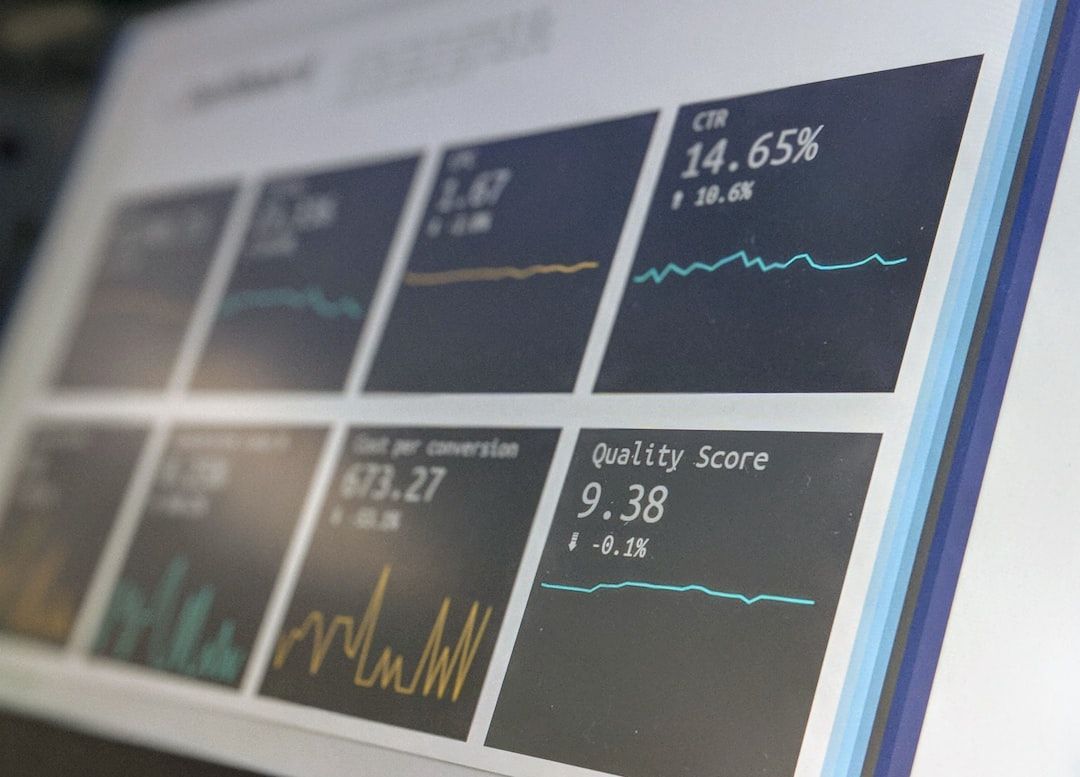
Tired of running the water and waiting for it to get hot? Hot Water Recirculation Pumps eliminate this wasteful practice by keeping hot water circulating through your pipes, providing instant hot water at every tap. These clever devices can save up to 12,000 gallons annually per household – that's a lot of water no longer going down the drain while you wait for your shower to warm up!
For the simplest and most affordable option, consider Clip-On Faucet Aerators. These inexpensive devices screw onto your existing faucets and instantly reduce flow from 2.2 GPM to 1.5 GPM or less. They're available in various flow rates and spray patterns to suit your preferences, and most people never even notice the difference in performance.
Similarly, Shower Flow Restrictors install in minutes between your shower arm and showerhead. Costing just a few dollars, these small devices can save thousands of gallons annually by limiting water flow regardless of what type of showerhead you have.
For the tech-savvy homeowner, Smart Water Monitors attach to your water meter or main supply line and provide real-time usage data and leak alerts right to your smartphone. Some advanced models can even automatically shut off your water if they detect unusual flow patterns that might indicate a leak. This technology not only saves water but can prevent catastrophic damage from undetected leaks.
Taking water conservation to the next level, Graywater Reuse Systems capture water from your sinks and showers and repurpose it for toilet flushing or outdoor irrigation. These systems can reduce water consumption by up to 30% in typical homes and range from simple DIY setups to sophisticated automated systems.
"We started with simple aerators and a shower timer, then gradually upgraded to a recirculation pump and smart leak detectors," shared one of our Boulder clients. "Each step reduced our water bill, and the peace of mind from leak protection is priceless."
Water-saving bathroom fixtures don't always require a complete remodel. These retrofits and accessories offer excellent value, often providing significant savings with minimal investment and installation effort. At Accountable Home Remodeling, we can help you identify which water-saving solutions make the most sense for your home and budget, whether you're ready for a full bathroom renovation or just looking to make some water-wise improvements.
Choosing and Installing Water-Saving Bathroom Fixtures
Ready to make the switch to water-saving bathroom fixtures but not sure where to start? Don't worry—finding the right efficient fixtures for your home doesn't have to be complicated.
When I meet with homeowners in Denver, I always recommend starting with a simple assessment of your current situation. Take a peek at your recent water bills to understand your baseline usage. This gives you a clear picture of where you stand and helps track your improvements once you've upgraded.
Next, think about which fixtures you use most frequently. In most homes, toilets and showers are the biggest water users, making them prime candidates for early upgrades. As one of our Lakewood clients put it: "We replaced our old toilet first since it was the biggest water hog, and were amazed at how quickly our water bill dropped!"
Your budget matters too. While water-efficient fixtures often pay for themselves through savings, it's important to balance upfront costs with long-term benefits. Many of our clients choose to upgrade fixtures gradually, starting with simple swaps like aerators and showerheads before tackling bigger projects like toilet replacements.
Compatibility with your existing plumbing is another crucial consideration. Most modern fixtures work with standard plumbing connections, but homes with older or unusual plumbing may require adapters or additional modifications. When in doubt, taking a photo of your existing connections to the hardware store can save you an extra trip.
Don't forget about rebates! Many Colorado water utilities offer significant incentives for water-efficient upgrades. I've seen clients save $50-$100 per toilet just by submitting simple rebate forms. These programs change regularly, so it's worth checking what's available in your area before making your purchase.
As for aesthetics, today's water-saving bathroom fixtures come in virtually every style imaginable. Whether your taste runs modern, traditional, or somewhere in between, you'll find efficient options that complement your bathroom's design. Gone are the days when eco-friendly meant sacrificing style!
When it comes to installation, you have options:
For DIY enthusiasts, replacing showerheads and adding faucet aerators are perfect weekend projects requiring minimal tools. Many of our clients handle these simple upgrades themselves with great success. You'll typically need just an adjustable wrench, some plumber's tape, and perhaps a bit of patience.
For more complex installations like toilets or built-in faucets, professional installation often makes sense. Our installation team not only ensures proper fitting and function but also handles removal and disposal of old fixtures—a convenience many homeowners appreciate. Professional installation also helps protect warranty coverage, which can be important for higher-end fixtures.
Local building codes may impact your choices too. Many Colorado municipalities now require water-efficient fixtures in new construction and major renovations. Our team stays current on all regulations to ensure your bathroom not only saves water but also meets all code requirements.
Certification Check: Look for WaterSense
When shopping for water-saving bathroom fixtures, the WaterSense label is your best friend. Think of it as the "Energy Star" for water efficiency—a government-backed certification that takes the guesswork out of choosing truly efficient products.
What makes WaterSense special is that it guarantees both efficiency and performance. Products earn this certification only after undergoing rigorous third-party testing to ensure they use at least 20% less water than standard models while performing as well or better than their conventional counterparts.
"I always tell my clients that WaterSense isn't just about saving water—it's about ensuring the fixture actually works well while conserving resources," explains our project manager. "There's nothing worse than an efficient toilet that needs double-flushing or a shower that feels like a drizzle."
The WaterSense program covers all major bathroom fixtures:
- Toilets that use 1.28 gallons per flush or less
- Bathroom faucets flowing at 1.5 gallons per minute or less
- Showerheads using no more than 2.0 gallons per minute
- Urinals operating at 0.5 gallons per flush or less
Look for the distinctive blue and green water droplet logo on packaging when shopping. Most major retailers now highlight WaterSense certified products, making them easy to spot on store shelves or online listings.
Calculating Potential Savings
Understanding the dollars and cents of water efficiency helps make the case for upgrading. I've found that once homeowners see the numbers, the decision becomes much easier.
Start by checking your current water consumption on your utility bill. Then estimate how much each fixture contributes to that total. As a rule of thumb:
- Each person flushes about 5 times daily
- The average shower runs about 8 minutes
- Faucets typically run 8-10 minutes per person per day
With these estimates, you can calculate potential water reduction by comparing the flow rates or flush volumes of your existing fixtures against efficient alternatives. Multiply the difference by your water rate (and sewer rate, which is typically based on water consumption), and you'll see your potential savings take shape.
Let me share a real example from a family in Highlands Ranch. When they replaced their old 3.5 GPF toilet with a 1.28 GPF model, they saved over 16,000 gallons annually. At local water rates, that translated to about $160 in yearly savings. With their new toilet costing $250 (after a $75 rebate), they recouped their investment in less than two years. And remember—those savings continue year after year!
Don't forget to factor in energy savings for fixtures using hot water. Water heating accounts for roughly 18% of home energy use, so reducing hot water consumption through efficient showerheads and faucets delivers a double benefit.
The rebate programs available throughout the Denver Metro Area can dramatically reduce your upfront costs:
- Denver Water offers up to $100 for WaterSense toilets
- Several suburban water districts provide similar incentives
- Some municipalities offer additional rebates for multi-fixture upgrades
"The math usually works out to a 1-3 year payback period for most water-efficient fixtures," notes our sustainability specialist. "After that, it's all savings—both for your wallet and for our precious Colorado water resources."
Water-saving bathroom fixtures and User Experience
Let's address the elephant in the bathroom: Will these efficient fixtures actually feel good to use? It's the number one concern I hear from homeowners considering the switch to water-saving bathroom fixtures.
The good news is that modern efficient fixtures are light-years ahead of their early predecessors. Today's designs maintain—and often improve—the user experience while using significantly less water.
Take showerheads, for example. Early low-flow models earned a bad reputation for weak spray patterns that left you feeling half-clean. Today's efficient showerheads use clever engineering to maintain satisfying pressure:
Manufacturers now aerate water streams to create fuller spray patterns, use pulsating delivery for massaging effects, and design precision nozzles that optimize water usage. The result? A shower that feels luxurious while using 30% less water.
As one Thornton homeowner told me after her bathroom renovation: "I was worried the low-flow showerhead would feel like a trickle, but it's actually more enjoyable than our old one. The spray pattern is more even, and I don't have to constantly adjust the temperature."
Many water-saving fixtures actually improve the overall experience beyond just conservation. Efficient faucets often create less splashing at the sink. Modern toilets flush more reliably and quietly. Thermostatic shower valves maintain consistent temperatures more effectively.
For households with specific needs or strong preferences, many manufacturers now offer adjustable-flow fixtures. These allow users to customize their experience within efficient parameters—particularly valuable for families with varying preferences or accessibility requirements.
The bottom line? Today's water-saving bathroom fixtures prove that efficiency and enjoyment aren't mutually exclusive. You truly can have a bathroom that's both eco-friendly and a pleasure to use every day.
Maintenance & Longevity Tips
Taking care of your water-saving bathroom fixtures doesn't have to be complicated. With some simple, regular attention, these eco-friendly investments will serve you well for years to come.
Let's talk faucets first. Those little aerators at the tip of your faucet? They're actually the unsung heroes of water efficiency, but they do need some TLC every few months. I recommend unscrewing them and giving them a good rinse about twice a year. If you live in areas like Broomfield or Westminster where hard water is common, a monthly soak in equal parts white vinegar and water works wonders for preventing mineral buildup.
"I keep a small jar of vinegar under my sink," shares Maria from Lakewood, one of our recent clients. "Once a month, I unscrew my faucet aerators, drop them in for an hour, and they work like new again. Such an easy fix!"
Those tiny drips might seem harmless, but they're actually water-wasting culprits in disguise. A single dripping faucet can waste over 3,000 gallons annually – that's water literally going down the drain! When you notice worn washers or O-rings, replacing them promptly saves both water and money.
Your showerhead deserves similar attention, especially in Colorado's hard water regions. Those tiny spray holes can become clogged with mineral deposits, reducing efficiency and pressure. A monthly vinegar soak keeps them flowing freely – simply fill a small plastic bag with vinegar, secure it over your showerhead with a rubber band, and let it sit for an hour. Your morning shower will thank you!
Toilets might seem maintenance-free, but they're actually common culprits for hidden leaks. Here's a simple test I share with all our clients: put a few drops of food coloring in your toilet tank and wait 15 minutes without flushing. If color appears in the bowl, you've got a leak that's silently wasting water. Often, it's just the flapper that needs replacing – a $5 part that can save thousands of gallons annually.
"One of the biggest misconceptions is that water-efficient fixtures require more maintenance," explains our service technician. "In reality, they often need less attention because they're built with newer, more durable materials and technologies."
For those with waterless or low-flow urinals, following the manufacturer's specific guidelines is crucial. These innovative fixtures use special traps or cartridges that typically need replacement every 3-6 months. Just remember to use only recommended cleaning products – harsh chemicals can damage components and actually create odor problems rather than solving them.
All these maintenance tips aren't just about conserving water – they're about protecting your investment in water-saving bathroom fixtures and ensuring they perform optimally for years to come. Many of our clients find that setting calendar reminders for basic maintenance tasks makes it easy to keep everything flowing smoothly.
When you're ready to upgrade your bathroom with water-efficient fixtures, consider our Green Building Materials options. We've curated products that combine sustainability with durability, ensuring your eco-friendly bathroom stands the test of time.
Common Misconceptions about Water-Saving Bathroom Fixtures
Despite all the advances in water-saving bathroom fixtures, I still hear the same concerns from homeowners considering the switch. Let me clear up some persistent myths that might be holding you back.
"I don't want a trickle shower!" This is probably the most common worry I hear, but today's efficient showerheads are engineering marvels. They maintain satisfying pressure through clever techniques like aeration and optimized spray patterns. Many of our clients actually report more enjoyable shower experiences after upgrading to water-efficient models.
Cost concerns are another stumbling block. While some premium water-saving fixtures do have higher price tags, many are comparably priced to standard models. The real value becomes clear when you factor in the water and energy savings over time, not to mention available rebates from local utilities. Most efficient fixtures pay for themselves within 1-3 years through reduced utility bills.
Remember those first-generation low-flow toilets from the 1990s? They gave efficient toilets a bad reputation that still lingers today. The good news is that modern high-efficiency toilets have completely solved those performance issues. Through improved bowl design, better trapway engineering, and innovative flushing technology, today's efficient toilets often outperform their water-guzzling predecessors.
"But I want a beautiful bathroom!" I hear this concern frequently, but it's based on an outdated assumption. Water-efficient fixtures now come in the same stunning array of styles, finishes, and design aesthetics as conventional fixtures. Whether your taste runs ultra-modern or classically traditional, there's a water-saving option that will complement your bathroom beautifully.
Some homeowners wonder if the savings are really worth the effort. The numbers speak for themselves: a family of four can save over 16,000 gallons annually by installing WaterSense fixtures throughout their bathroom. That's equivalent to more than four months of showering! These savings benefit both your wallet and our increasingly precious Colorado water resources.
As one of our Aurora clients put it: "I held off upgrading because I thought efficient fixtures would be a step down in performance. I couldn't have been more wrong. Our new bathroom not only looks better but works better while saving us money every month."
Frequently Asked Questions about Water-Efficient Fixtures
Do water-saving fixtures really lower water bills?
Absolutely! And not by just a little bit, either. The EPA's data shows that an average family can trim their water bills by about $200 each year after installing water-saving bathroom fixtures throughout their home.
These savings come from several places at once. First, you're simply using less water—typically 20-30% less than with conventional fixtures. Then there's the reduced energy costs since you're heating less water for showers and handwashing. Finally, most municipalities calculate sewer charges based on water consumption, so you'll see savings there too.
I remember working with a family in Longmont who were skeptical about the potential savings. They decided to track their bills before and after we installed their new fixtures, and they were amazed to find a 24% reduction in their quarterly water costs. That added up to over $240 saved in just the first year—more than paying for some of the fixtures we installed!
Can I retrofit my existing bathroom without major renovation?
You'll be happy to know that boosting your bathroom's water efficiency doesn't require tearing out walls or spending thousands of dollars. Many improvements are surprisingly simple and non-invasive.
If you're comfortable with basic DIY projects, replacing your showerhead is about as difficult as changing a light bulb—you just need an adjustable wrench and maybe some plumber's tape. Installing faucet aerators is even easier; they simply screw onto your existing faucets. For toilets, you can add tank banks or adjustable flappers in about 15 minutes, no special tools required.
For those with a bit more DIY confidence, replacing bathroom faucets typically takes just 1-2 hours with basic tools. Installing a dual-flush converter on your existing toilet is another moderate project that delivers significant water savings.
"Many of our Denver Metro clients are surprised by how much water they can save with just a few hours of work and minimal investment," our renovation consultant often tells homeowners. "We often start with these simple retrofits before planning larger bathroom renovations."
If you prefer professional help, replacing toilets is typically a 2-3 hour job that doesn't require any wall modifications. Adding hot water recirculation pumps or pressure-reducing valves are also relatively non-disruptive installations that can dramatically reduce water waste.
Are rebates or incentives available in my area?
Good news for Denver Metro residents—many local water utilities offer substantial rebates that can offset the cost of your water-saving bathroom fixtures!
Denver Water has one of the most generous programs, offering up to $100 back when you install a WaterSense certified toilet. They also provide rebates for outdoor water-saving devices and even offer free indoor water-saving devices through their conservation program.
If you're in Aurora, you can receive up to $75 for WaterSense toilets and $10 for WaterSense showerheads. Aurora Water also offers additional incentives for commercial properties looking to improve their water efficiency.
Boulder residents can take advantage of toilet rebates up to $100, free water-wise landscape consultations, and indoor water efficiency assessments through the city's Water Conservation Program.
Most of these rebate programs have a few simple requirements: you'll need proof of purchase, verification that your new fixtures have WaterSense certification, and confirmation that they're installed within the service area. You'll also need to apply within a specific timeframe after purchase—usually 60-90 days.
To find the most current rebates in your specific location, the EPA's WaterSense Rebate Finder is an excellent resource. And don't forget to check with your energy utility as well—some offer additional rebates for devices that reduce hot water use, which helps them meet their energy conservation goals too.
I've seen many homeowners in the Denver area cut their upfront costs by 30-50% through these rebate programs, making the switch to water-saving bathroom fixtures even more financially attractive. In some cases, the rebates covered the entire cost of the new fixtures!
Conclusion
Installing water-saving bathroom fixtures represents one of the smartest investments you can make for both your wallet and our planet. Throughout this guide, we've explored how modern water-efficient technologies deliver exceptional performance while dramatically reducing consumption—proving that conservation and comfort can absolutely go hand in hand.
When I talk with homeowners across the Denver Metro Area, I'm often struck by how surprised they are after making the switch. "I wish we'd done this years ago," is something we hear regularly at Accountable Home Remodeling. People consistently find that today's efficient fixtures not only meet but often exceed their expectations for performance and style.
The benefits ripple outward in ways you might not immediately consider. Yes, you'll see lower utility bills (typically saving around $200 annually for the average family), but you're also contributing to something much larger. Every bathroom upgrade reduces pressure on Colorado's strained water resources, decreases energy needed for water treatment, and lightens the load on municipal infrastructure.
Remember those common worries about weak pressure, poor flushing, and limited design options? Modern engineering has thoroughly addressed these concerns. Today's water-saving bathroom fixtures deliver powerful showers, reliable flushes, and come in virtually every aesthetic from sleek contemporary to classic traditional.
For Colorado residents, water conservation carries special significance. Our semi-arid climate and growing population make every drop increasingly precious. By choosing efficiency, you're helping ensure water availability for future generations while setting an example for sustainable living in your community.
Whether you're planning a complete bathroom renovation or looking for simple, high-impact upgrades, the path to water efficiency is clear and accessible. Start with the fixtures you use most frequently, look for the WaterSense label, and take advantage of available rebates to reduce your upfront costs.
At Accountable Home Remodeling, we're passionate about helping Denver-area homeowners create bathrooms that are beautiful, functional, and responsible. Our team stays current on the latest water-saving technologies and local rebate programs to ensure you get maximum value from your bathroom improvements.
Water efficiency isn't just a trend—it's a fundamental shift in how we think about resource use in our homes. By embracing water-saving bathroom fixtures, you're making a choice that benefits your household today while contributing to a more sustainable Colorado tomorrow.
Ready to transform your bathroom into a model of water efficiency without sacrificing style or comfort? Contact us to discuss how we can help make your vision a reality.

